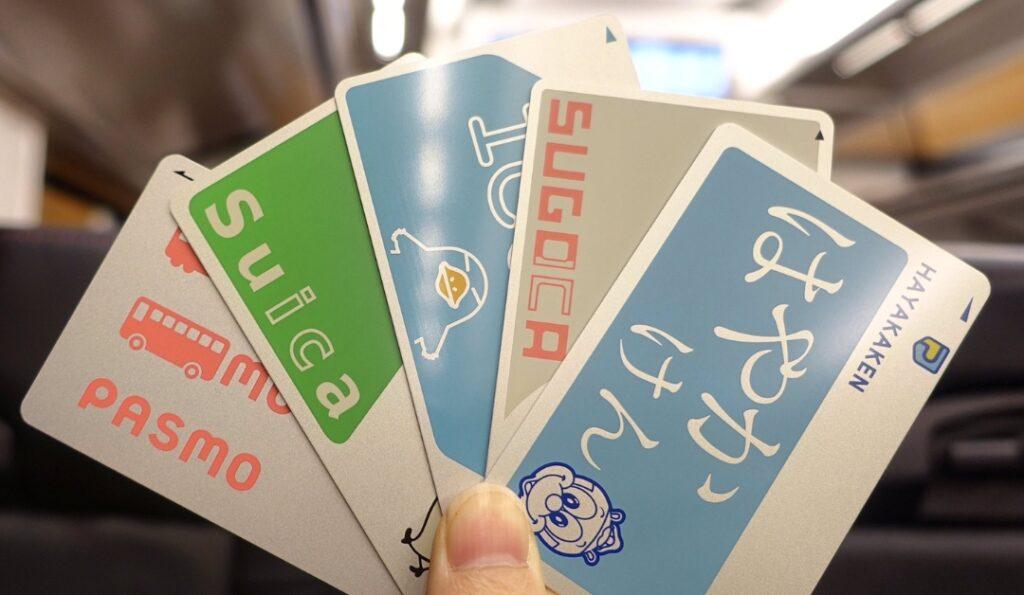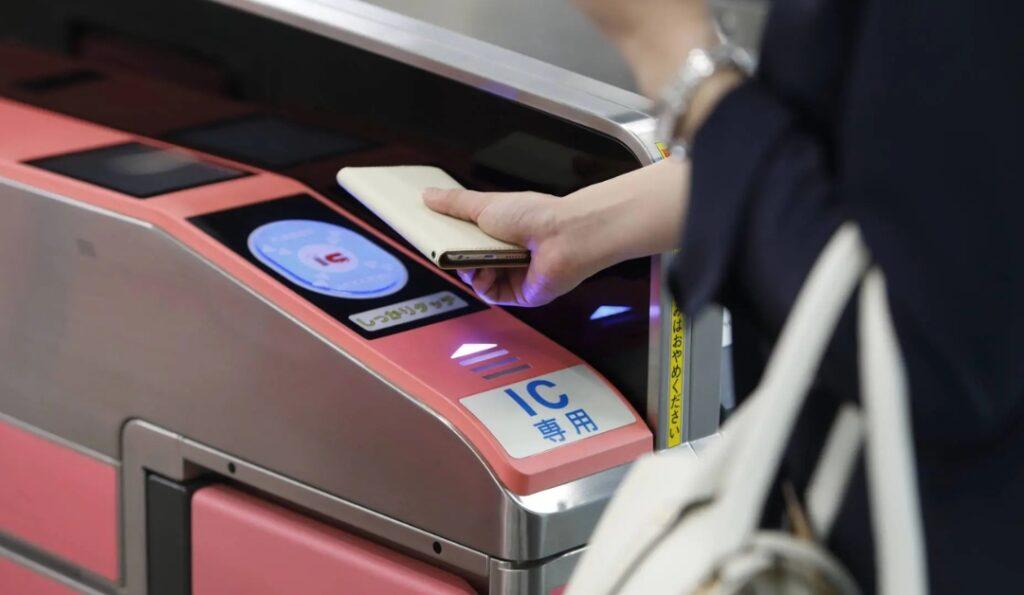In Japan, Suica and Pasmo are two of the most widely used IC (Integrated Circuit) cards for public transportation and various other services. These cards have become an essential part of daily life for residents and visitors alike, offering convenience and efficiency in accessing transportation, making purchases, and availing of other services.
Currently, due to a manufacturing issue, the production of physical IC cards has been suspended until further notice. However, there are still ways to utilize the benefits of an IC card through other convenient alternatives.
What is an IC Card in Japan?

An “Integrated Circuit” Card, better known as an IC Card, is a type of payment card in Japan that contains an embedded microchip used to store data like an EMV card. It is often used to pay public transportation fares such as trains, buses, and subways, but it can also be used for vending machines, shops, and restaurants. Besides financial transactions, some IC Cards can also be a form of an employee identification card.
As of 2021, 200 million IC Cards have been issued in Japan. Since 2001, the IC Card has been an integral part of a Japanese commuter’s life, as these cards have streamlined and simplified the payment process for public transportation in Japan, making it easier for locals and tourists to travel around the country. Additionally, you can check out our guide on How to Travel in Japan for more insights on the public transportation network.
The Different Kinds of IC Cards in Japan

There are different kinds of IC Cards in Japan, but the top two major cards that the majority of the Japanese population use are Suica and Pasmo, introduced by two separate railway companies in Japan. Suica was launched by East Japan Railway Company (JR East) in 2001, while Pasmo was introduced by a group of private railway operators in the Tokyo metropolitan area in 2007.
Suica and Pasmo are the two IC Cards commonly used by tourists who are travelling around Tokyo, since Suica covers the JR East trains in Greater Tokyo, Niigata, and Sendai Regions while Pasmo handles Tokyo’s railway, subway, and bus operators that are not under JR East.

Besides Suica and Pasmo, there are other kinds of IC Cards such as Icoca, Pitapa, Toica, Manaca, Kitaca, Sugoca, Nimoca, and Hayakaken. Each IC Card has their features and benefits, with certain cards only used in certain regions and cities in Japan. For example, Manaca covers the train, subway, and bus operators of Nagoya, while Hayakaken is the IC Card for the Fukuoka Subway of Fukuoka City.
In June 2023, JR East and other railway operators limited the sales of Suica and Pasmo cards due to a shortage of chips worldwide, making it difficult for their card manufacturers to supply IC chips. This shortage was an effect of the COVID pandemic that affected various industries worldwide, including the electronics industry.

Eventually, railway operators ceased the production of physical IC cards, suspending the sales of Suica and Pasmo cards until further notice. Personalized and non-personalized Suica and Pasmo cards are included in the suspension. However, this suspension only applies to people who were planning to purchase starting August 2, 2023. Cards that were already purchased prior, and are still active (meaning they’ve been used in the past 10 years), can still be used.
Alternatives to IC Cards in Japan
Although the decision to suspend physical IC cards is unfortunate, there are still many alternatives that you can use for public transportation and other financial transactions.
Suica & Pasmo Mobile Apps

Suica and Pasmo have utilized the technology of mobile payment by creating apps that serve as mobile versions of Suica and Pasmo. You can consider them as digital travel cards and are available to use on Apple and Android phones. Apps such as Apple Pay, Google Pay, and Rakuten Pay allow users to store their credit or debit card information and make contactless payments at transportation gates and retail locations that accept IC cards.
Welcome Suica Card
Despite the suspension of physical IC Cards, Suica can still produce Welcome Suica Cards, a type of prepaid IC Card made for short-term visitors in Japan. This IC Card is ideal for tourists, especially those travelling around the major cities in Japan since this card works in those areas.
Since the card is for short-term visits, the Welcome Suica card lasts only 28 days. This means that after 28 days, the card, along with its remaining balances, expires and cannot be in use anymore.

Currently, you can get Welcome Suica cards at the JR EAST Travel Service Center and the Welcome Suica Vending Machine at the Haneda Airport Terminal 3 (Tokyo Monorail) Station. The card comes with a Reference Paper, similar to a receipt, with the card’s information on it. It’s needed for validity purposes just in case train station staff asks for it.
Pasmo Passport Card
Similar to the Welcome Suica Card, the Pasmo passport card is a tourist-friendly version of the regular Pasmo card. Not only is it created for short-term visits, but it also offers additional benefits and discounts for tourists.

One of the benefits of the Pasmo Passport card is that there is no 500 yen issuance fee, unlike other IC Cards. The discounts given by the card are exclusive to popular tourist attractions in Japan. However, similar to the Welcome Suica Card, you can only use the Pasmo Passport card for up to 28 days.
You can purchase Pasmo Passport Cards at the following locations;
- Airport Terminals
- Narita Airport
- Haneda Airport
- Train Stations
- Shinagawa
- Yokohama
- Ueno-okachimachi
- Shimbasi
- Shinjuku-Nishiguchi
- Shibuya
- Tokyo Metro Stations
- Ueno
- Ikebukuro
- Ginza
- Shinjuku
- Iidabashi
- Takadanobaba
- Meiji-jingle
- Otemachi
Enjoy Hassle-Free Traveling in Japan!

IC cards such as Suica and Pasmo remain prevalent and convenient options for managing transportation and payments in Japan. There are indeed alternatives available to accommodate the suspension of the production of physical IC cards.
From apps to special travel cards, travellers and residents in Japan can still experience the convenience of physical IC Cards. Through these alternatives enhance their overall experience in navigating the country’s transportation systems and retail landscape.
















































